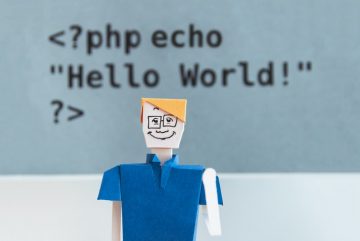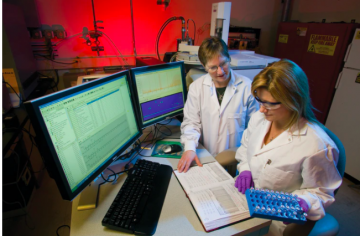Digital literacy is a critical element as we look to enhance teaching and learning in today’s classrooms. In Episode 2 of our recently launched Thinking outside the Sandbox podcast, Dr. Jennifer Jenson, Dr. Marina Milner-Bolotin, and Dr. Sandrine Han share their ideas and experiences with respect to digital technology integration and the development of digital competencies in K-12 and pre-service teacher contexts.
Download Podcast Transcript: Transcript_Ep 2 Technology
Below are a few edtech tools or resources that might be used to support each of the main points discussed in this episode:
1. Computational Participation

Dr. Jennifer Jenson shares the value of offering students the opportunity to learn to code and emphasizes the learning value of learners engaging in collaboration, communication and learning by doing. This active approach affords the opportunity to develop build competencies including algorithmic and computational thinking. Visit this link for a more comprehensive resource about learning to code. Below are just a couple of suggested tools/activities:
Scratch is a drag and drop programming language (aka visual programming as noted in the Gr. 6/7 ADST curriculum). It is designed with younger learners in mind but could be used by anyone wanting to get started with coding and learn the logic behind it!
Twine is an open source tool for creating interactive ‘pick a path’ and other stories.
Ozobot is a small and smart robot designed for kids to learn about robotics and coding that allows for scaffolded learning using ‘line and colour’ commands, visual programming block commands and even Java or Python script writing.
2. Integrating Video Games in the classroom to learn STEAM-based competencies
Below are examples shared by Dr. Jennifer Jenson about learning algorithms as well as analyzing racist, sexist content through Video Games:
Breakout EDU provides standards-aligned games that are played collaboratively and encourage creative problem-solving.
ARIS allows students to create location-based games, tours, or stories.
Twine is another great example of the possibilities for creating story through code (as is the case when designing a digital game!).
For more examples of game design applications including low and no tech, read the Sandbox Blog post about Scavenger hunts & other Edu Game Tools!
3. Using Technology to share knowledge with students in Science classrooms
Dr. Marina Milner-Bolotin explains how technology serves as an important tool in science education, especially with the handy tools on smartphones, where it could facilitate data collection, present abstract experiences, record slow-motion videos to observe (E.g: oscillations). She also mentions the use of Camtasia to share experiments with others.
Other useful technological tools that could be used in science education include:

1. Jamboard: Allows students to work together, collaborate, and visually display their learning.
2. Science Journal: Without access to a physical classroom, Science Journal allows students to make many science experiments without specific measuring tools, but only a mobile device.
3. Phenomenal Physics & Astronomy at Home: Check out the challenges shared by the UBC physics and astronomy outreach program. Each challenge includes self-guides activities that consist of a general introduction, summaries of physics concepts, videos, and online experiment simulations to support students’ learning experience.
For more science & tech integration ideas, please visit the following blog posts:
– Secondary Science Tech Integration
– Secondary Chemistry Tech Integration
4. Use of Virtual Worlds for interdisciplinary projects
Dr. Sandrine Han proposes the use of Virtual platforms to encourage students to solve real-life problems through an interdisciplinary approach!
– Webcams and Virtual field trips could be used to bring about real-life experiences in the class.
– Augmented and Virtual Reality could be used to engage students in a certain place that would set the stage for an inter-disciplinary project in a real-life setting.
– Minecraft is a virtual world building application with which many students across grade levels are familiar. A variety of resources available freely only provide suggestions and lesson plans for interdisciplinary learning.
5. Intertwining Art in Science projects

Dr. Sandrine Han also shares an example of intertwining Art in a Science project, solar systems! Check these blog posts for detailed examples of lesson and unit planning that integrate Art:
– Intertwining art in each of the following subjects; Mathematics, English Language, and Science
– Creating an interdisciplinary unit that includes Art, Science, and Social Studies.
Guest Post: Nashwa Khedr, EDCP graduate student, project assistant 2020

